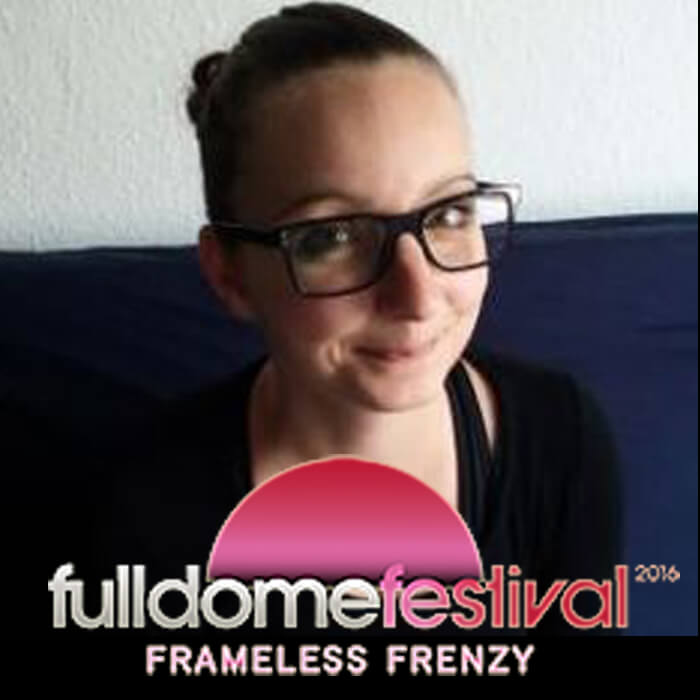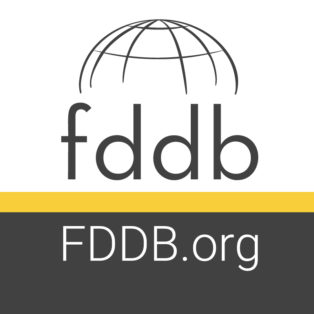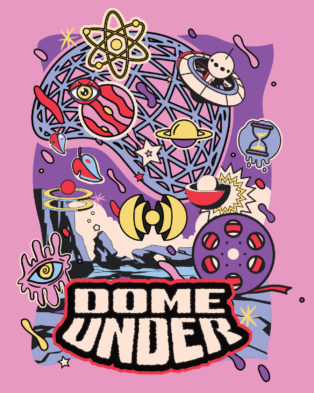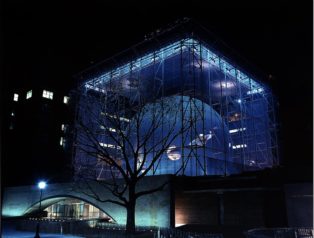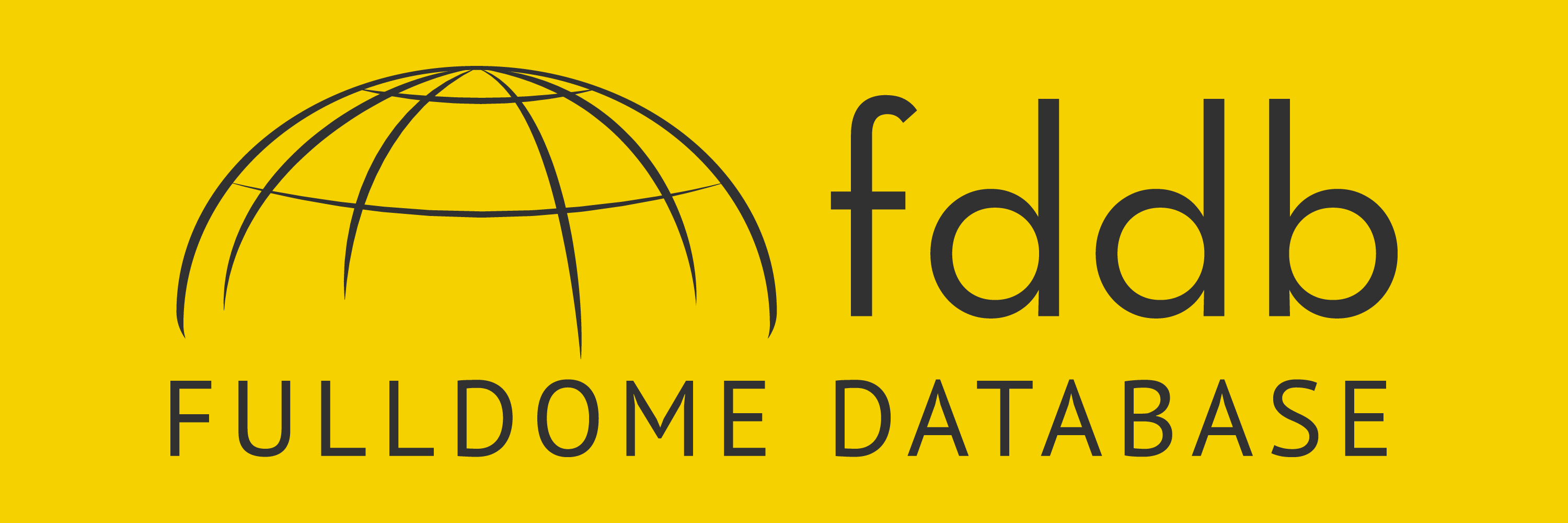Future Cinema as Foreseen By Maren Kießling – 10th Fulldome Festival Diary
The first workshop during 2016 Fulldome Festival was delivered by Maren Kießling who is currently studying conversion of image dramaturgies in context of new technologies as a part of her PhD research. Being A.P. of Film at the Martin Luther University of Halle-Wittenberg, Maren enjoys access to cutting-edge technologies and has a great opportunity to present the fruits of her labor on the internationally acclaimed stage.
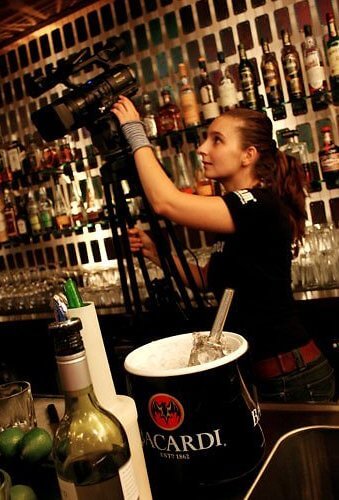 With fulldome media moving forward each year, a question should be asked: How an extension and diversification can be made, adapted to the new technical representation of today and in future? From the beginning of distribution of digital content in cinema, the technological production and projection possibilities seem to develop at cyberspeed. Stereo 3D, Higher Frame Rate (HFR) and high-resolution images are taking over the big screen. But what about the dramaturgical and pictorial content? Should it adapt the new possibilities?
Today directors and cinematographers already agree, that the use of 3D effects must be adapt to the story, to get away from the ‘cinema of attractions’ to a qualitative use of 3D. Maren believes that elements of image design and dramaturgy will be examined on its reasonableness in future cinema, for example the 180° system, shot-reaction-shot or various camera settings. New studies on digital cinema technology will be shown and statements will be made, how a ‘future cinema’ will look like.
In the course of her workshop Maren tried to show the future of the cinema and particularly the changes and innovations in image dramaturgies by means of film analyses, professional literature, studies of perception and expert interviews as well as test material.
The main question that must be answered today is how image dramaturgy should look to attract the required audience. Or how it should sound in the case of Dolby Atmos, spatial sound technology that creates powerful, moving audio by introducing two important concepts to cinema sound: audio objects and overhead speakers.
After viewing the short film “Call her Lotte!” in 7.1 and Dolby Atmos, Maren together with an international expert group of 20 people experienced the effects of 3D sound on human perception and the importance of the new sound standards for immersion of films. That way music has a much stronger impact on the audience, it’s more transparent and clear. This study was performed at the MMZ studio in Halle.
With fulldome media moving forward each year, a question should be asked: How an extension and diversification can be made, adapted to the new technical representation of today and in future? From the beginning of distribution of digital content in cinema, the technological production and projection possibilities seem to develop at cyberspeed. Stereo 3D, Higher Frame Rate (HFR) and high-resolution images are taking over the big screen. But what about the dramaturgical and pictorial content? Should it adapt the new possibilities?
Today directors and cinematographers already agree, that the use of 3D effects must be adapt to the story, to get away from the ‘cinema of attractions’ to a qualitative use of 3D. Maren believes that elements of image design and dramaturgy will be examined on its reasonableness in future cinema, for example the 180° system, shot-reaction-shot or various camera settings. New studies on digital cinema technology will be shown and statements will be made, how a ‘future cinema’ will look like.
In the course of her workshop Maren tried to show the future of the cinema and particularly the changes and innovations in image dramaturgies by means of film analyses, professional literature, studies of perception and expert interviews as well as test material.
The main question that must be answered today is how image dramaturgy should look to attract the required audience. Or how it should sound in the case of Dolby Atmos, spatial sound technology that creates powerful, moving audio by introducing two important concepts to cinema sound: audio objects and overhead speakers.
After viewing the short film “Call her Lotte!” in 7.1 and Dolby Atmos, Maren together with an international expert group of 20 people experienced the effects of 3D sound on human perception and the importance of the new sound standards for immersion of films. That way music has a much stronger impact on the audience, it’s more transparent and clear. This study was performed at the MMZ studio in Halle.
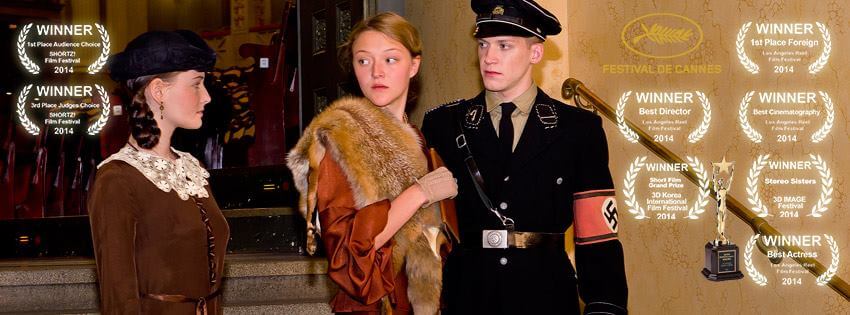 While working on various 3D films since 2009, Maren studied the effect of stereoscopic 3D in movies of last years from Avatar to other blockbusters. She’s assured herself that the use of 3D must adjust to the plot. The action must stay visually at the center of the frame, so the audience stay immersed in the film because the action is focused on one area. However things become more challenging in fulldome shows as there’re no frames or any other boundaries.
Maren’s experiments with frame rate have also proved to be useful. She took a film shot in 96 fps, which was then transferred to 24 and 48 fps by the Arts Department of Zurich University and Disney Research. The same film, the same settings, the same light, but different frame rate. Then she run a survey showing these samples to groups of people aged from 15 to 64 years, half male and half female. As it turned out, most respondents (about 76%) actually preferred 96 fps. The most common feedback was that the film had more details: "It felt like I could see more", said people from the audience.
While working on various 3D films since 2009, Maren studied the effect of stereoscopic 3D in movies of last years from Avatar to other blockbusters. She’s assured herself that the use of 3D must adjust to the plot. The action must stay visually at the center of the frame, so the audience stay immersed in the film because the action is focused on one area. However things become more challenging in fulldome shows as there’re no frames or any other boundaries.
Maren’s experiments with frame rate have also proved to be useful. She took a film shot in 96 fps, which was then transferred to 24 and 48 fps by the Arts Department of Zurich University and Disney Research. The same film, the same settings, the same light, but different frame rate. Then she run a survey showing these samples to groups of people aged from 15 to 64 years, half male and half female. As it turned out, most respondents (about 76%) actually preferred 96 fps. The most common feedback was that the film had more details: "It felt like I could see more", said people from the audience.
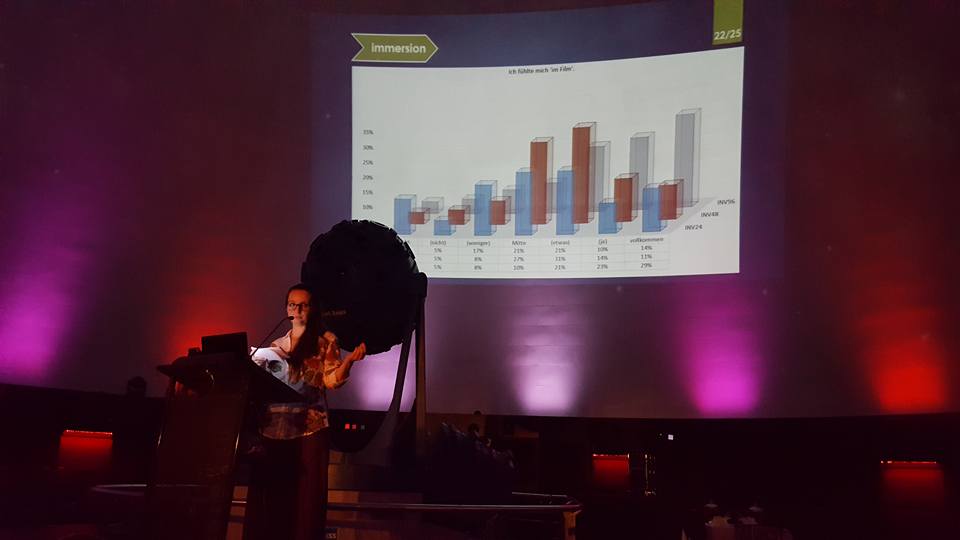 We also got a chance to watch a clip from RED both in 24 and 96 bits. However 96 fps takes some time to get used to, it totally delivers more details, focuses on the visual quality and leaves a much stronger impression. There is no judder, just clear and soft immersive visuals.
The workshop was followed by some discussion on whether it’s wise to have a centered action in the dome. The 360° experience requires greater production skills and knowledge, and then a lot of practice to figure out what works best. Drawing a sort of conclusion, though, Maren pointed out that it’s become increasingly difficult to ignore the new possibilities for image design and dramaturgy. And what’s even more important, there’s absolutely no use ignoring them.
We have more brilliant workshops to cover. Stay tuned!
We also got a chance to watch a clip from RED both in 24 and 96 bits. However 96 fps takes some time to get used to, it totally delivers more details, focuses on the visual quality and leaves a much stronger impression. There is no judder, just clear and soft immersive visuals.
The workshop was followed by some discussion on whether it’s wise to have a centered action in the dome. The 360° experience requires greater production skills and knowledge, and then a lot of practice to figure out what works best. Drawing a sort of conclusion, though, Maren pointed out that it’s become increasingly difficult to ignore the new possibilities for image design and dramaturgy. And what’s even more important, there’s absolutely no use ignoring them.
We have more brilliant workshops to cover. Stay tuned!

Maren Kießling behind her video camera.
Photo credit: Anja Grothe

The poster of "Call her Lotte!" ran in 7.1 and Dolby Atmos.
Photo credit: Miriquidi Films

Maren Kießling during her presentation on 2016 Fulldome Festival.
Have you liked this post? Subscribe to FDDB Newsletter
Start the experience!
Not yet registered?
Sign up now, it's free!
Sign up now, it's free!









